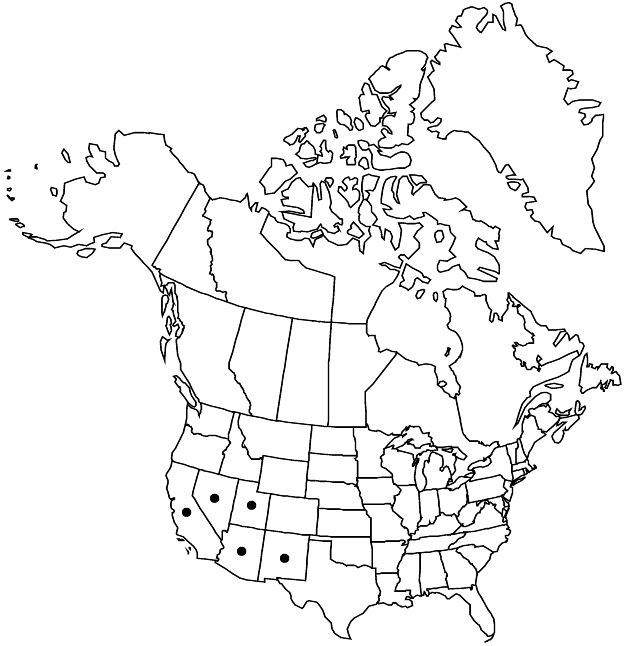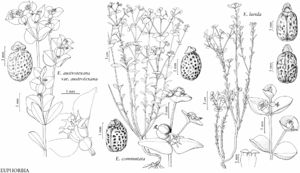Euphorbia lurida
Rep. Colorado R. 4: 26. 1861.
Herbs, perennial, with thick rootstock. Stems erect or ascending, unbranched, sometimes sinuous, 5–30 cm, glabrous or sparsely to densely puberulent. Leaves: petiole 0–1 mm; blade oblanceolate to obovate, 8–20 mm × 3–7 mm, base truncate or cuneate, margins entire, apex obtuse to rounded, minutely mucronate, surfaces puberulent or glabrous; venation inconspicuous, only midvein prominent. Cyathial arrangement: terminal pleiochasial branches 3–5, each 1–4 times 2-branched; pleiochasial bracts ovate to broadly ovate or oblanceolate, wider than distal leaves; dichasial bracts distinct, rounded, oblanceolate, or subreniform, base cuneate or obtuse, margins entire, apex obtuse, slightly mucronate; axillary cymose branches 0–4. Cyathia: peduncle 0.3–0.9 mm. Involucre cupulate, 2–2.2 × 1.3–1.8 mm, glabrous; glands 4, oblong to broadly ovate, usually truncate, 0.5–0.8 × 1–1.6 mm, margins irregularly crenate to strongly dentate; horns absent or usually divergent or straight, 0.1–0.3 mm, usually slightly longer than, occasionally equaling, teeth on gland margin. Staminate flowers 10–20. Pistillate flowers: ovary glabrous or puberulent; styles 0.7–1 mm, 2-fid. Capsules ovoid, 3.5–4 × 4–4.5 mm, 3-lobed; cocci rounded, smooth to slightly rugose, glabrous; columella 3.2–3.5 mm. Seeds gray to dark gray, truncate-oblong to truncate-ovoid, 2.8–3 × 1.7–2 mm, irregularly pitted; caruncle conic, 0.6 × 0.7 mm.
Phenology: Flowering and fruiting spring–summer.
Habitat: Open pine-oak forests, dry slopes and canyons.
Elevation: 1300–2800 m.
Distribution

Ariz., Calif., Nev., N.Mex., Utah, Mexico (Baja California)
Discussion
Euphorbia lurida has been treated as a complex of several taxa in the past, but only a single, broadly-defined species is recognized here. This species is variable in both the pubescence and shape of the bracts subtending the cyathia and also in the degree of crenation of the gland margin. In the northern part of its range, E. lurida appears to intergrade with E. brachycera, and it can be difficult to distinguish these two species in northern Arizona and New Mexico. A report of the species from Sonora, Mexico, based on a single immature collection (V. W. Steinmann and R. S. Felger 1997) has not been verified.
Selected References
None.
Lower Taxa
"wider" is not a number."connate" is not a number. "distinct" is not a number."connate" is not a number. "distinct" is not a number.
